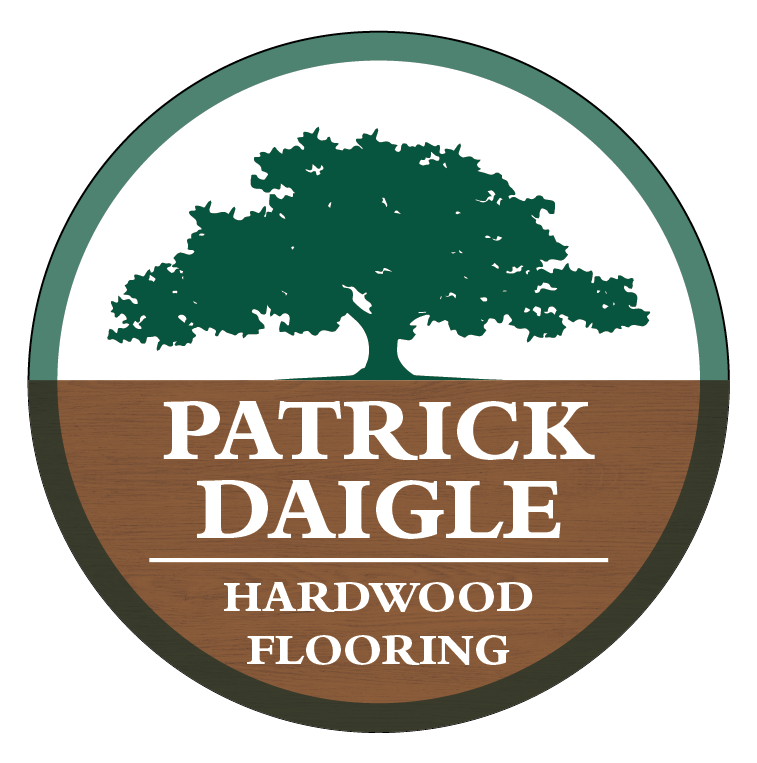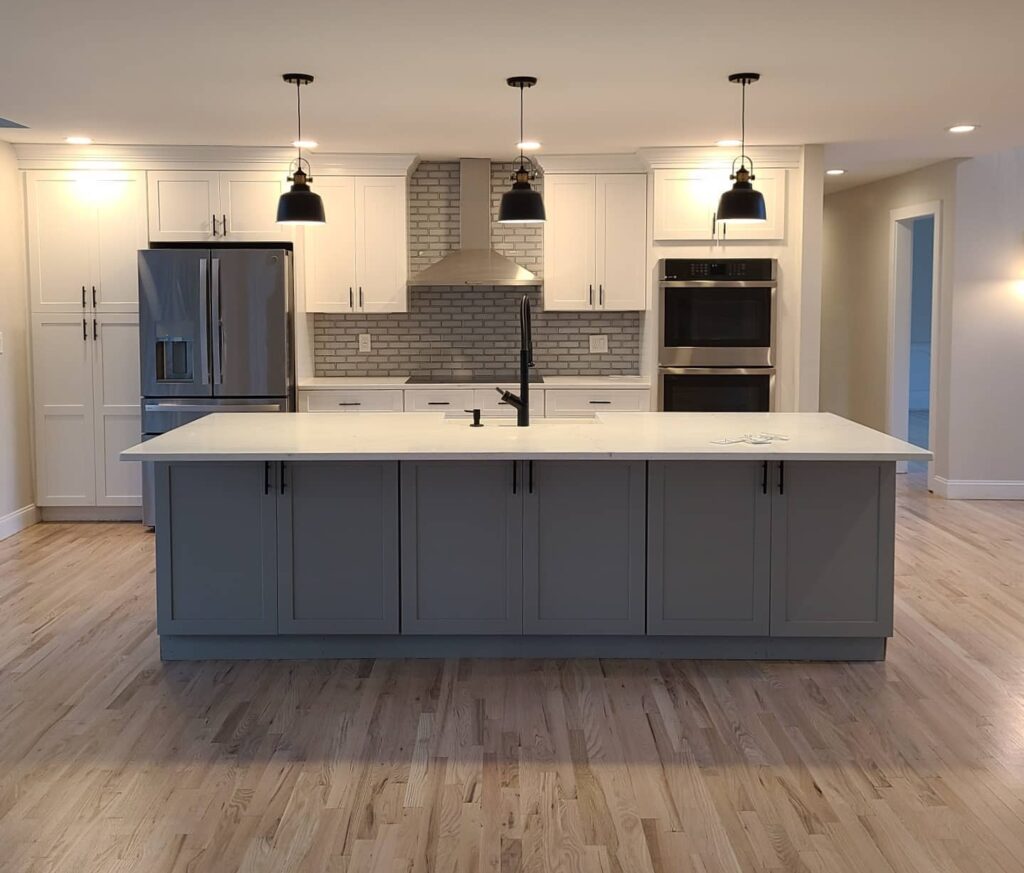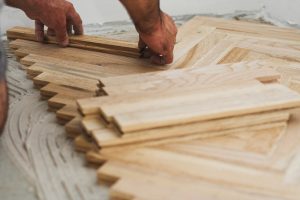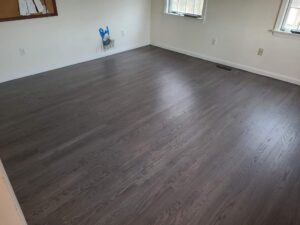The Truth About “Waterproof Hardwood”: A Family Guide to Avoiding Gimmicks
Imagine the classic elegance of hardwood flooring gracing every corner of your home, yes, even the kitchen, mudroom, or basement, without a worry about spills, water damage, or heavy foot traffic. It’s a captivating vision, and savvy marketers know it all too well.
In today’s market, terms like “100% Waterproof Hardwood,” “Hydro Treated Wood,” and “Wood-Look” are everywhere. They sound reassuring but often hide a simple truth: truly waterproof wood finishes for flooring don’t exist.
At Patrick Daigle Hardwood Flooring, we pride ourselves on genuine, enduring wood craftsmanship. Your home is one of your greatest investments, and you deserve transparency about what’s authentic, what’s a gimmick, and what genuinely works for a bustling family life.
The Simple Truth: “Waterproof,” vs. “Water-Resistant”
The reality is straightforward: no flooring crafted from 100% real wood can be entirely waterproof.
Wood is a natural material, composed of tiny, porous wood grain and plywood layers that absorb and release moisture. To make it completely impermeable, it would have to be converted into something non-wood, like plastic.
What you can opt for, which performs admirably in family homes, is high-performance, water-resistant flooring. These engineered wood and Engineered Hardwood Flooring options can withstand daily spills and moisture, offering you the opportunity to clean up before any damage sets in.
Decoding the Gimmicks: What Are You Actually Buying?
Gimmick #1: The “Waterproof” Floor That’s Just a Picture of Wood
Often, this is Luxury Vinyl Plank (LVP) or laminate flooring, featuring a plastic or composite core with a printed wood grain surface.
- What it is: Genuinely waterproof.
- What it’s not: Authentic wood. It cannot be sanded or refinished, does not contribute to long-term value, and lacks the character and warmth of true hardwood species.
Gimmick #2: “Waterproof” Engineered Wood with a Fiberboard Core
These products are marketed as wood flooring, consisting of a thin hardwood veneer over a Medium-Density Fiberboard (MDF) core.
- What it is: An appealing surface that can withstand a spill if cleaned up promptly.
- What it’s not: Truly water-resistant solid hardwood flooring. If moisture penetrates the seams, the MDF core can warp and deteriorate beyond repair, similar to wet cardboard.
The Real Deal: True Water-Resistant Hardwood
For those seeking genuine wood with enduring durability, high-quality Engineered Hardwood Flooring is the way to go. Its core comprises layers of real wood, stacked with grains in varying directions, offering remarkable stability against moisture and warping.
When topped with a robust, factory applied finish, like water-based finishes, oil based finishes, or durable wood finishes, you have a stunning, resilient surface that can endure family life, including pets, spills, and heavy foot traffic.
Three Questions to Ask Before You Buy
To shield yourself from sales gimmicks, pose these three questions when selecting a floor:
- What is the core made of? A multi-ply wood core is indicative of quality. An MDF or fiberboard core is a red flag.
- Is this a real wood top layer or just a printed image? Genuine wood with a wear layer can be sanded and refinished over time, hallmarking long-term value.
- Can this floor be sanded and refinished? If the answer is “no,” it’s a short-term fix that may end up being more costly.
Invest in Authenticity, Not Gimmicks
The allure of “waterproof wood” is strong, but your family deserves flooring that provides both beauty and performance for decades. Opt for quality craftsmanship, a floor that can withstand life’s moments, adapt to your needs, and be rejuvenated as it ages.
If the wide array of choices feels overwhelming, we’re here to assist. At Patrick Daigle Hardwood Flooring, we’re dedicated to ensuring your floor is as enduring and genuine as the cherished memories you make on it.
Contact us or visit our gallery, we’d love to help you find the right floor for your home and family.





